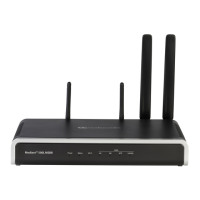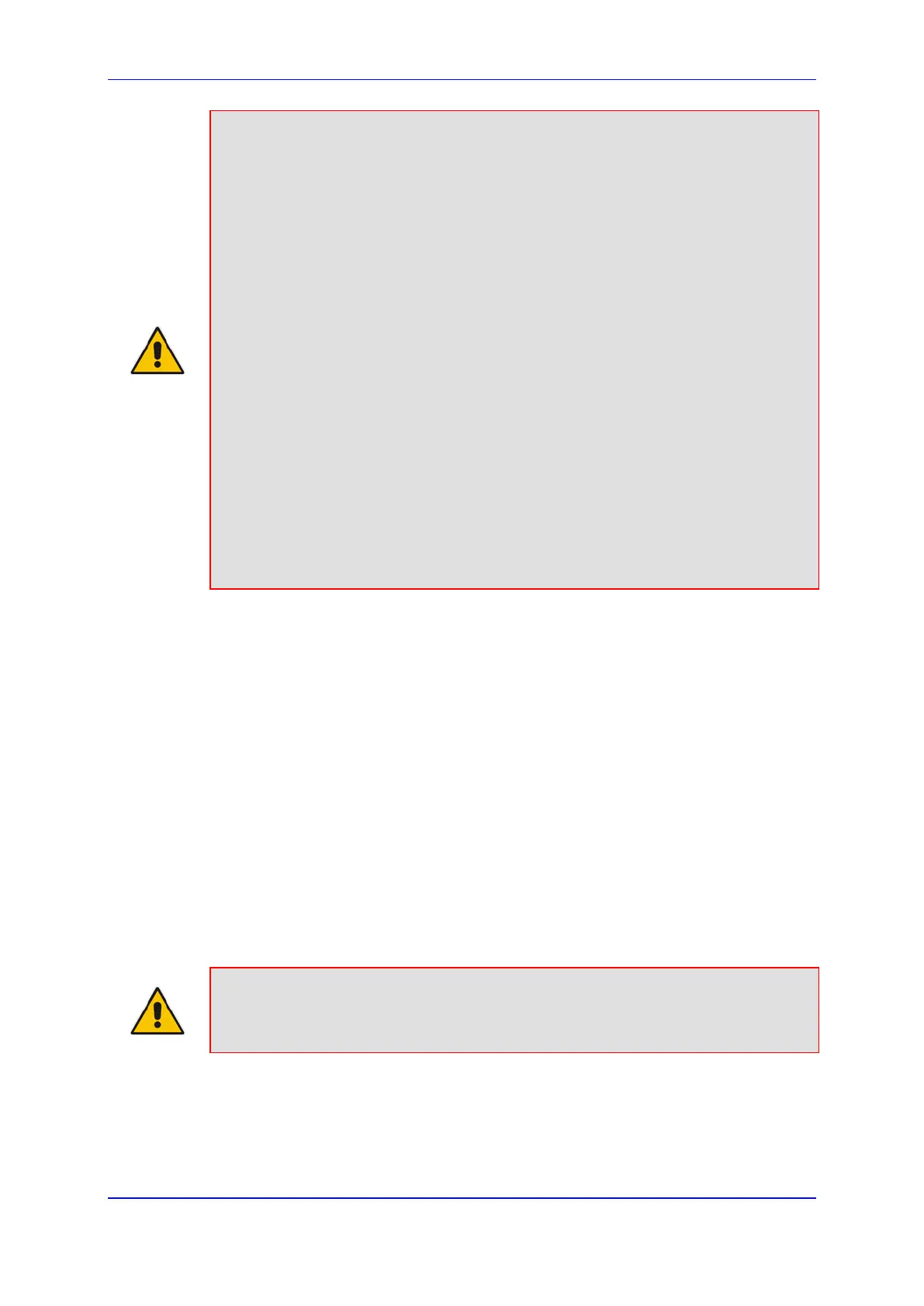User's Manual 31. SBC Overview
Version 6.8 523 Mediant 500L MSBR
Notes:
• No Media Anchoring can be used when the SBC does not do NAT traversal (for
media) where all the users are in the same domain.
• No Media Anchoring calls cannot operate with the following features:
√ Manipulation of SDP data (offer/answer transaction) such as ports, IP address,
coders
√ Extension of RFC 2833 / out-of-band DTMF / in-band DTMF
√ Extension of SRTP/RTP
• All restriction features (Allowed Coders, restrict SRTP/RTP, restrict RFC 2833)
can operate with No Media Anchoring calls. Restricted coders are removed from
the SDP offer message.
• For No Media Anchoring, opening of voice channels and allocation of IP media
ports are not required.
• When two UAs belong to the same SRD which is enabled for No Media Anchoring,
and one of the UAs is defined as a foreign user (example, “follow me service”)
located in the WAN while the other UA is located in the LAN: calls between these
two UAs cannot be established until the No Media Anchoring for the SRD is
disabled, as the device does not interfere in the SIP signaling. In other words,
parameters such as IP addresses are not manipulated for calls between LAN and
WAN (although required).
• When the global parameter SBCDirectMedia is disabled, No Media Anchoring can
only occur for calls between UAs belonging to the same SRD that is configured for
No Media Anchoring in the SRD table.
31.4.3 Restricting Coders
The SBC Allowed Coders (coders restriction) feature determines the coders that can be
used for a specific SBC leg. This provides greater control over bandwidth by enforcing the
use of specific coders (allowed coders groups) while preventing the use of other coders.
This is done by defining a group of allowed coders for the SBC leg, as described below:
1. Configure a Coders Group for allowed coders, using the AllowedCodersGroup
parameter.
2. Select this Coders Group using the SBCAllowedCodersGroupID parameter of the IP
Profile table.
3. Enable this feature by setting the SBCAllowedCodersMode parameter of the IP Profile
table to Restriction.
Coders that are not listed (including unknown coders) in the Allowed Coders Group are
removed from the SDP offer. Therefore, only coders common between the SDP offer and
Allowed Coders Group are used. If the SDP offer does not list any of the Allowed Coders,
the call is rejected.
Notes:
• For a list of supported coders, see ''Configuring Default Coders'' on page 323.
• Allowed Coder Groups are applicable only to audio media.
The Allowed Coders process is as follows:
a. The device receives an incoming SIP message with SDP (offer) and checks the
offered coders.
b. The source (first) leg may have Allowed Coders (i.e. list of coders that can be used -
enforced).

